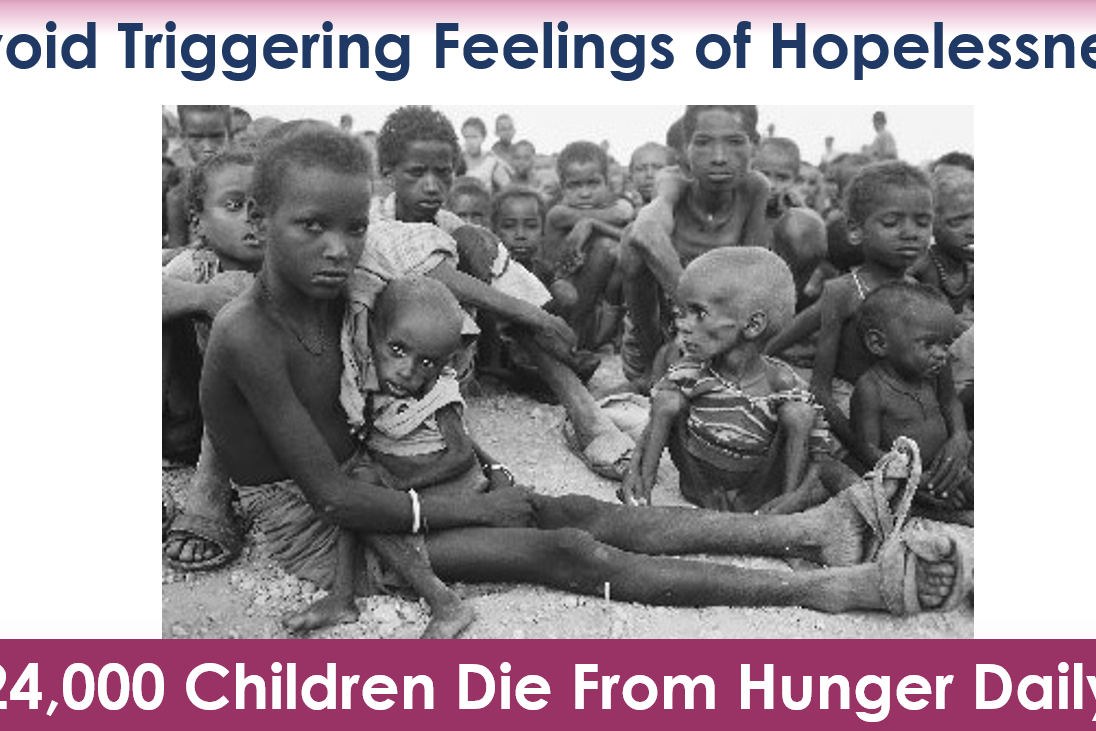Scope: The Key to Donor Generosity?
There’s a powerful psychological principle known as the “identifiable victim effect.”
It has to do with how you describe the scope of the problem you’re asking donors to help address. And what they will do as a result of how they perceive this scope.
- Is it a scope they can visualize and relate to?
- Or is the number so large it’s difficult for them to wrap their brains around it?
There’s another related psychological principle known as “scope insensitivity.”
It applies when a number is too large for people to really comprehend its meaning. If you tell me something costs $1 billion, I really have little idea how this might differ from $10 million. Both numbers are equally overwhelming. I can’t picture how high a pile of either would be in dollar bills or even $100 bills. I have no sensitivity as to the scope because I simple can’t sense it.
Fundraisers absolutely need to know about, and apply, these principles.
Details

 Fundamentals are important! Before writing your appeal, it’s good to remind yourself of the basics to make sure you’ve got all bases covered. Look at the elements you want to include; make sure you’re applying them. In this two-part series, I’m calling out eight appeal writing fundamentals. In
Fundamentals are important! Before writing your appeal, it’s good to remind yourself of the basics to make sure you’ve got all bases covered. Look at the elements you want to include; make sure you’re applying them. In this two-part series, I’m calling out eight appeal writing fundamentals. In 
 I never begin writing a fundraising appeal without beginning with a template and checklist. It’s always good to remind yourself of the fundamentals.
I never begin writing a fundraising appeal without beginning with a template and checklist. It’s always good to remind yourself of the fundamentals.